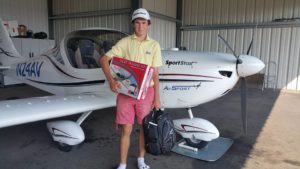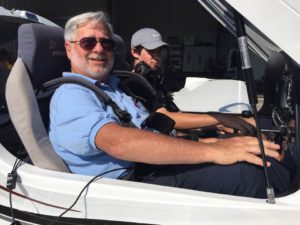Unfortunately during our lesson time on July 24th, a cold front was passing through Lock Haven. I preflighted the plane, but as I was doing so, the wind was gusting wildly in different directions, I was seeing storms in every direction, and the ceiling and conditions were definitely not good enough to practice stalls as we had planned.
So, we did more ground instruction on weather, as it was appropriate for the situation, and then we went over the operating specs of the Rotax 912 engine. I actually did not know that much about engines, so learning about my engine was a lot of information to take in. I also learned a lot about how the operating fluids work, and now I actually know what “10 W 40” means on my car’s engine oil.
After we finished ground instruction, we looked outside and at the weather history and realized that shortly after we decided not to fly, the weather had totally cleared up, and we could have done our planned flight lesson, but we concluded that it was in fact worth the ground instruction and practicing prudence in weather decision making.


